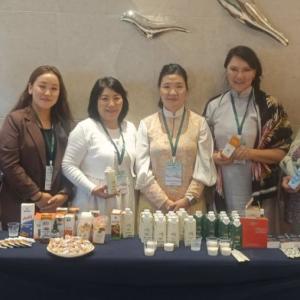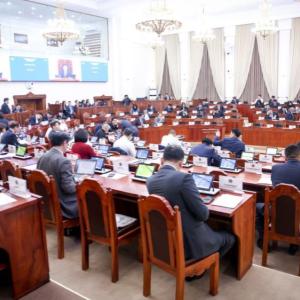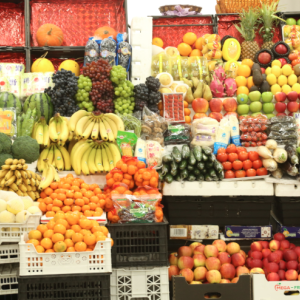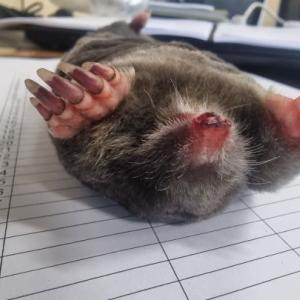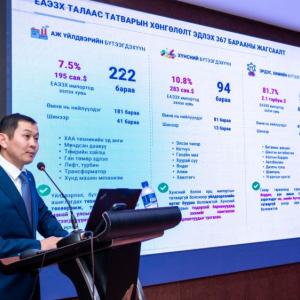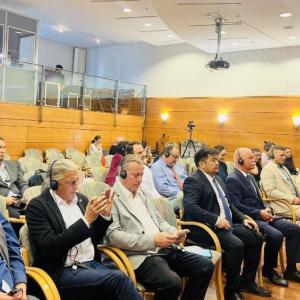B.Batjargal: It is important to involve herders in insurance
Society
Ulaanbaatar
/MONTSAME/. Within the implementation of the ‘Extending Social Protection to Herders with Enhanced Shock Responsiveness’ program,
the issue concerning the health of herders and increasing their involvement in
social insurance is being focused.
In the
framework of the program funded by the UN SDG Fund, a study on herders’ behaviour
towards social and health insurance was conducted between 2020 and 2022 by the Ministry
of Labor and Social Protection in cooperation with the International Labour
Organization, the University of Maastricht, and the Independent Research
Institute of Mongolia.
In his
opening remarks, UN Resident Coordinator Tapan Mishra expressed gratitude to
the International Labour Organization for playing the leading role in
implementing the joint program, and noted the importance of promoting the
benefits of being involved in social insurance, and for herders to share the
information with each other.

“As
herders often lack information regarding social insurance, they do not make
regular payments of social insurance contribution, which prevents them from
being covered by insurance. Factors such as insufficient income and remote
geographical location also affect the situation. Another factor negatively
affecting the herders’ attitude towards social insurance is how the country’s
people have traditionally prioritized current issues rather than those that
would yield benefits in the future,” he said.
Head
of Social Insurance Policy Implementation and Coordination Department of the
Ministry of Labour and Social Protection B.Batjargal said, “28 years have
passed since social insurance inspectors began to work at 330 soums in the 21
aimags of Mongolia. Although the country has “soft” infrastructure and
appropriate amount of human resource in this sense, the total number of herders
involved in social insurance amounts to 49,000 as of 2021 - which is
insufficient.”

“In
order to improve the situation, the law was amended to allow social insurance
contracts to be established annually rather than monthly, based on the herder’s
income.
According
to a study, 80 percent of the 4.2 million mobile phones being used nationwide
are smartphones. Therefore, we created the appropriate conditions for making
the monthly social insurance payment online.
We are
grateful that the ILO conducted a study on herders’ behavior in the framework
of the project. As the
Ministry of Labor and Social Protection have also previously carried out a
study involving 3,000 people in the capital city, it has now become possible to
compare the results of these two studies. While the income of many businesses
dropped due to the pandemic situation during the last two years, favorable
weather conditions allowed herders to maintain their source of income.
Herders
who are not covered by health and social insurance would eventually be excluded
from the system and included in the welfare group. It is important to take the
risk into account to involve herders in insurance,” he added.
A
total of 4,000 herders based in eight aimags were involved in a study on
‘Herders’ behaviour towards social and health insurance’. Of the herders, 55
percent were men and 45 percent were women, while 39 percent were aged 35-44,
27 percent were aged 25-34, and 28 percent were aged 45-54.
The
average annual income of herder families is MNT 15,278,807, which is close to
the average household income calculated by the National Statistical Office (NSO).
81 percent of the participants receive ‘Child Money’ monthly allowance for
their children, while only 14 percent receive old-age pensions. The study has
also found that 64 percent of the households have loans, while 12 percent have
savings.
The
4,000 herders involved in the study own a total of 1,607,784 livestock animals,
of which 12 percent are small cattle and 88 percent are large cattle. Those who
answered that their livestock and livestock products are their main source of
income, also tended to involve
their livestock in insurance for a long period of time. One out of three
herders (31 percent) insured their livestock against natural disasters, theft,
and infectious diseases, and 54 percent of herders insured their livestock for
less than 4 years.
36
percent of the herders answered that they are covered by health insurance to protect
themselves and their families, while 41 percent said that they are involved in
insurance as they consider it to be crucial for herders. As for the herders who
were not involved in insurance, they answered that they consider health
insurance to be costly and not important. According to the survey, 39 percent
of the herders make monthly social insurance contributions, with 29 percent making
voluntary payments and 9 percent making mandatory payments.
According
to the National Statistics Office of Mongolia, the total number of herders
was 298,798 in 2020, which is 8.7 percent of the country's population. In
2010-2020, the number of young herders decreased by 28.9 thousand or 8.8
percent. 19.9 percent of Mongolia’s population are members of herder households,
and 24.1 percent of the workforce are employed in the livestock sector. Thus, it
is important for herders to be involved in health and social insurance systems
that are efficient and accessible.
 Ulaanbaatar
Ulaanbaatar




















